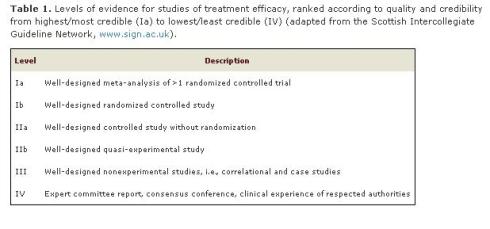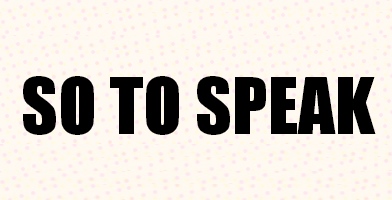SLP Corner: Strategies for EI – Says WHO?
When “Simon Says” Doesn’t Work: Alternatives to Imitation for Facilitating Early Speech Development
Laura S. DeThorne, Cynthia J. Johnson, Louise Walder, Jamie Mahurin-Smith; When “Simon Says” Doesn’t Work: Alternatives to Imitation for Facilitating Early Speech Development. Am J Speech Lang Pathol 2009;18(2):133-145. doi: 10.1044/1058-0360(2008/07-0090).
As you know, I work with children 0-3 (I’d say the average age I get referrals is probably 26 months) in group center-based, individual center-based, and home-based therapy. I often make suggestions to parents on the very first day I see a child, maybe even in the evaluation – but I’ve often wondered …where do I get this stuff? Says who?
I saw this article while I was trying to find an article that supports the notion of putting an object near the face when you label it to gain attention and encourage imitation. I found a variety of sources that make the same suggestion but I have not seen any studies (if you know of one throw it my way). I seriously make this suggestion like three times a week but WHY? Who says it actually does anything? Somebody out there has to know.
ANYWAY, this literature review focused on six strategies that SLPs recommend and utilize for early speech imitation and language development. The review’s goal is to provide SLPs with evidence based strategies (rather than strategies that are anecdotal and maybe outdated and things that we just do because we see other therapists do it.) I have this dream that one day I’ll have a citation for every strategy I suggest to families. Which sounds alarming but really, I wouldn’t want a medication that hasn’t been proven to work.
What are these six strategies that SLPs frequently utilize to elicit speech imitation?
- Provide AAC access
- Minimize the pressure to speak
- Imitate the child
- Utilize exaggerated intonation and decrease rate
- Augment auditory, visual, tactile, and proprioceptive feedback
- Avoid emphasis on nonspeech-like articulator movements: focus on function
How did researchers pick these strategies?
First, they created a list of strategies that already had some theoretical framework which were supported by the big wigs of speech pathology. Then they used a variety of search methods to track down associated intervention studies. Then they narrowed down the list to these strategies with Level Two empirical evidence (supported by at least one experimental or quasi-experimental study on a relevant population).
You guys remember about empirical evidence right? Let’s review friends:

What is something cool that this literature review told me about each of these strategies?
- Provide AAC: The authors identified SIX studies which support providing AAC to children who do not easily imitate. Within those six studies, 89% of the children showed an increase in verbal output, and 11% showed no change. AAC had no detrimental impact on speech production in any of the children.
- Minimize pressure: In a study with 29 late-talking preschoolers, using mands and prompted imitation increased imitation within a speech session, however showed no carryover to the natural environment. The study indicated that directly prompting an imitation does not increase word-learning any more than low-pressure imitation.
- Imitate the child: Recent studies have shown that when you see someone perform a familiar action, neurons fire in YOUR brain too as though you’re doing the action. So when a child sees a clinician it may incite neurons in their brain which acts as an involuntary rehearsal. How neat is that? Super neat.
- Exaggerated intonation and slowed rate: This one is kind of weird because they call it exaggerated intonation and slow rate but they talk about singing – which I think are two separate things but nobody asked me. The research for singing and speech is extensive for adults. However, one study showed that melodic intonation therapy was more effective at increasing phoneme imitation versus oral motor therapy (which makes sense because we all know oral motor therapy does nothing for speech right? WE ALL KNOW THIS RIGHT?)
- Enhance sensory feedback: There’s a pretty small amount of literature on use of auditory and visual feedback for small children. However, tactile and proprioceptive information has shown promise for eliciting imitation in children via the PROMPT program. The idea of using enhanced sensory feedback is that we’re helping the child develop internal models for speech sound production (i.e. motor planning has a sensory result)
- Focus on function: Oral motor therapy is not effective based on a number of unpublished studies. If you feel the need to recommended non-speech oral motor exercises, do it only when a child is genuinely not imitating speech at all and the activity should match as closely as possible in the areas of position, movement, and function of the target sounds.
So now when you recommend a speech imitation strategy to a family or caregiver you can at least rest easy knowing these six strategies do have an evidence base. There are numerous other suggestions we make as clinicians that don’t have a Level 2 evidence rating – we should strive to increase our EBP for early language imitation and development. Don’t you think?
About the Author: Samantha Weatherford, SLP-CFY:
Samantha Weatherford, MS CCC-SLP, is a speech language pathologist who works in the areas of early intervention and adult rehabilitation. She blogs at So To Speak regarding the educational, professional, and clinical processes of becoming an SLP. She resides in Delaware with her cat Simon.
Please support our contributors and visit the So To Speak blog!
PediaStaff is Hiring!
All JobsPediaStaff hires pediatric and school-based professionals nationwide for contract assignments of 2 to 12 months. We also help clinics, hospitals, schools, and home health agencies to find and hire these professionals directly. We work with Speech-Language Pathologists, Occupational and Physical Therapists, School Psychologists, and others in pediatric therapy and education.

